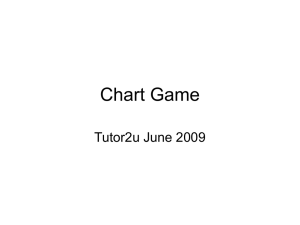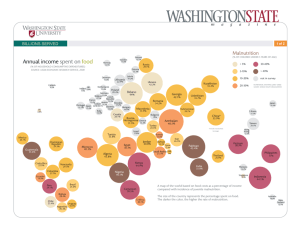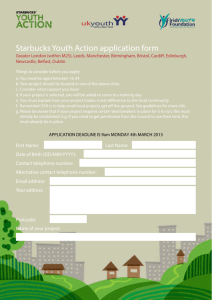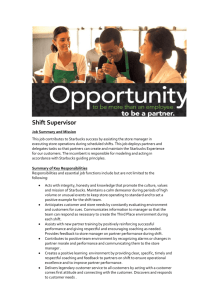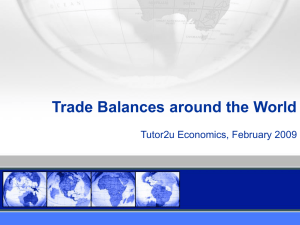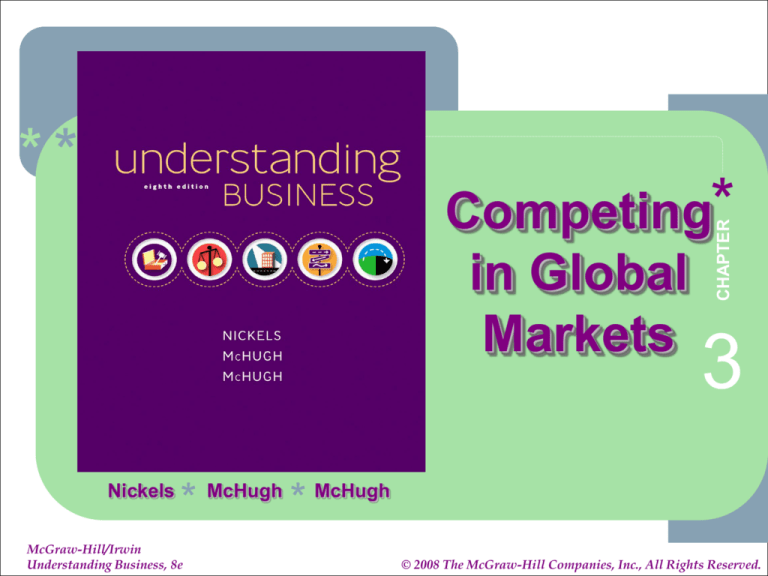
*
*
*
**
CHAPTER
Competing*
in Global
Markets
3
Nickels
*
McGraw-Hill/Irwin
Understanding Business, 8e
McHugh
*
McHugh
1-1
3-1
© 2008 The McGraw-Hill Companies, Inc., All Rights Reserved.
*
*
*
The Dynamic Global Market
World Population by continent:
1% 8%
6%
United States
South America
12%
Africa
Europe
Asia
60%
13%
Australia
** The U.S. is the largest importing nation in the World!
3-2
*
*
*
Growing World Population
12
10.8
10
In Billions
8
6
8.5
5.3
6.0
6.5
1998
2010
4
2
0
1990
2030
2060
Source: Population Reference Bureau
3-3
*
*
*
Why Trade With
Other Nations?
• No nation can produce all
its needs
• Mutually beneficial
exchange
• Natural Resources or
Technology- Produce or
Buy?
3-4
*
*
*
Theories of Advantage
Comparative
U. S.
China
China
U. S.
Output per
Unit of Input
Software
Clothing
3-5
*
*
*
Theories of Advantage
Absolute = Virtual Monopoly
South Africa
Output per
Unit of Input
The Rest of
the World
Diamond Production
3-6
*
*
*
Global Competitiveness
Country
Strengths
United States
Technology,
R & D Spending
Finland
Univ. Enrollment, Efficient Legal
System, Business Ethics
Taiwan
Cell-phone Ownership,
Tech. Innovation,
Local Firms Competitiveness
Singapore
Savings Rate, Math/Science
Education, Political Trust
Sweden
H.S. Enrollment, Press Freedom,
Phone Access
3-7
*
*
*
Global Trade
• Goods & Services
• Importing
• Exporting
• Measuring Trade
• Balance of Trade/Payments
• Trade Deficit
• Dumping
3-8
*
*
*
U. S. Trade in
Goods & Services (Billions)
1600
1400
Balance of
Trade
1200
1000
800
600
400
Exports
200
Imports
0
1975 1980 1985 1990
1995 2000 2002 2005
Source: St. Louis Business Monthly, Oct. 1999 & World Trade Organization & Wikipedia
3-9
*
*
*
Leading Goods
Exporters/Importers
In Billions $
Country
United States
Germany
Japan
France
United Kingdom
World Total
Source: Wikipedia, 2005
Exports
928
1016
539
443
374
9,099
Imports
1,476
717
402
420
439
8,823
3-10
*
*
*
Strategies for
Reaching Global Markets
• Licensing
• Joint Ventures &
Strategic Alliances
• Exporting
• Franchising
• Foreign Direct
Investment
• Contract
Manufacturing
• Joint Ventures
3-11
*
*
*
Country Presence
of Well-Known Companies
Krispy Kreme
7-Eleven
Starbucks
McDonald's
Whirlpool
UPS
FedEx
0
50
100
150
200
250
Source: World Features Syndicate
3-12
*
*
*
Starbucks’ Expansion
World Locations
29%
71%
International
U.S.
Source: Starbucks.com May 2006
3-13
*
*
*
Most Spoken Languages
4%3%1%
English
11%
Spanish
Other IndoEuropean
Asian and
Pacific Island
Other
Most Spoken
Languages
in the U.S.
81%
22%
Most Spoken
Languages
in the World
Mandarin
Chinese
Spanish
English
7%
Hindi
8%
Portuguese
13%
Source: 2005 CIA World Factbook
37%
13%
Other
3-14
*
*
*
Foreign Direct
Investments in the U.S.
1200000
1000000
800000
600000
400000
200000
0
Europe
Latin
America
Asia
Canada
Source: Bureau of Economic Analysis, 2004
3-15
*
*
*
World’s Largest MNCs
1) Wal-Mart Stores
2) Exxon Mobil
3) General Motors
4) BP
5) Ford Motor
6) Daimler Chrysler
7) Royal Dutch/Shell
8) General Electric
9) Toyota Motor
10) Mitsubishi
Revenue ($Billions)
217
213
175
174
162
136
135
125
121
112
Source: Business Week; Morgan Stanley Capital International; and S&P Compustat
3-16
*
*
*
What’s On Your Pizza
•
•
•
•
•
•
•
Costa Rica - Coconut
France - Bacon, onion and fresh cream
India - Pickled ginger, minced mutton and tofu
Australia - Shrimp and pineapple
Pakistan - Curry
Brazil - Green peas
Japan - Squid and mayo jaga
Source: World Features Syndicate
3-17
*
*
*
Forces Affecting Trading
in Global Markets
• Socio-cultural
• Economic & Financial
• Legal & Regulatory
• Physical & Environmental
3-18
*
*
*
Cultural Differences
in Global Markets
• Language
• Religion
• Social
Structure
• Aesthetics
• Values &
Attitudes
• Personal
Communication
3-19
*
*
*
Did You Know?
• In Turkey it’s rude to cross your arms
while you are facing someone.
• In the Arab world the left hand is
considered unclean; don’t eat with it!
• In India never pat someone’s head,
it’s the seat of the soul.
• The Chinese associate gifts such as
straw sandals, clocks and
handkerchiefs with funerals.
3-20
*
*
*
Economic & Financial Forces
• No Worldwide Currency
• Currency Fluctuations
• Floating Exchange Rates
• Bartering/Countertrading
3-21
*
*
*
U.S. Oil Imports
Canada
18%
Mexico
33%
Venezuela
15%
12%
12%
10%
Nigeria
Saudi Arabia
Other
Source: Gibson Consulting 2005
3-22
*
*
*
Nations That Have Not
Converted to the Metric System
United
States
Liberia
Source: 2005 Yourunits.com
Myanmar
(Burma)
3-23
*
*
*
Legal & Regulatory Forces
1. Inconsistent Laws &
Regulations
2. Foreign Corrupt
Practices Act of 1978
3. Local Business Contact
Required
3-24
*
*
*
Developing Countries
Need Infrastructure
• 1.2 billion people lack clean
drinking water
• 2 billion people
lack electricity
• 3 billion people lack
adequate sanitation
3-25
*
*
*
Protectionism
• Mercantilism
• Tariffs
• Protective
• Revenue
• Import Quota
• Embargo
• Nontariff Barriers-Keiretsu
3-26
*
*
*
Trade Agreements
•
•
•
•
General Agreement on Tariffs & Trade (1948)
Uruguay Round of GATT (1986)
World Trade Organization (1995)
Common Markets
• European Union (EU)
• Mercosur
• North American Free Trade Agreement (1994)
• Central America Free Trade Agreement (2005)
3-27
*
*
*
Future Global Trade
• People’s Republic of ChinaPermanent Normal Trade
Relations/Rights
• Russia & Others
• Internet
•Technology- Obstacles/Problems
3-28
*
*
*
Pro’s & Con’s of
Offshore Outsourcing
Pro’s
Con’s
• More focus on areas
where they can excel and
grow
• Jobs lost/wages fall
• Outsourced work creates
efficiencies, resulting in
hiring more workers
• Communication
becomes much more
difficult
• Reduces product quality
• Fuels global market
growth
3-29

